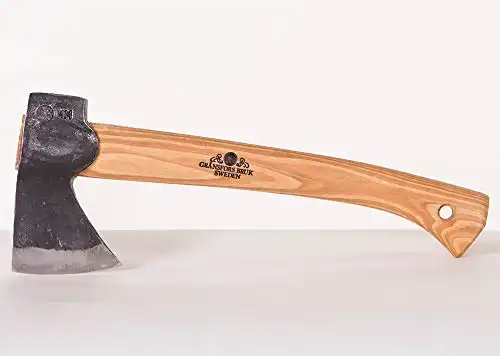Are you looking for the best backpack hatchet you can buy? Look no further. The Gränsfors Bruks Wildlife
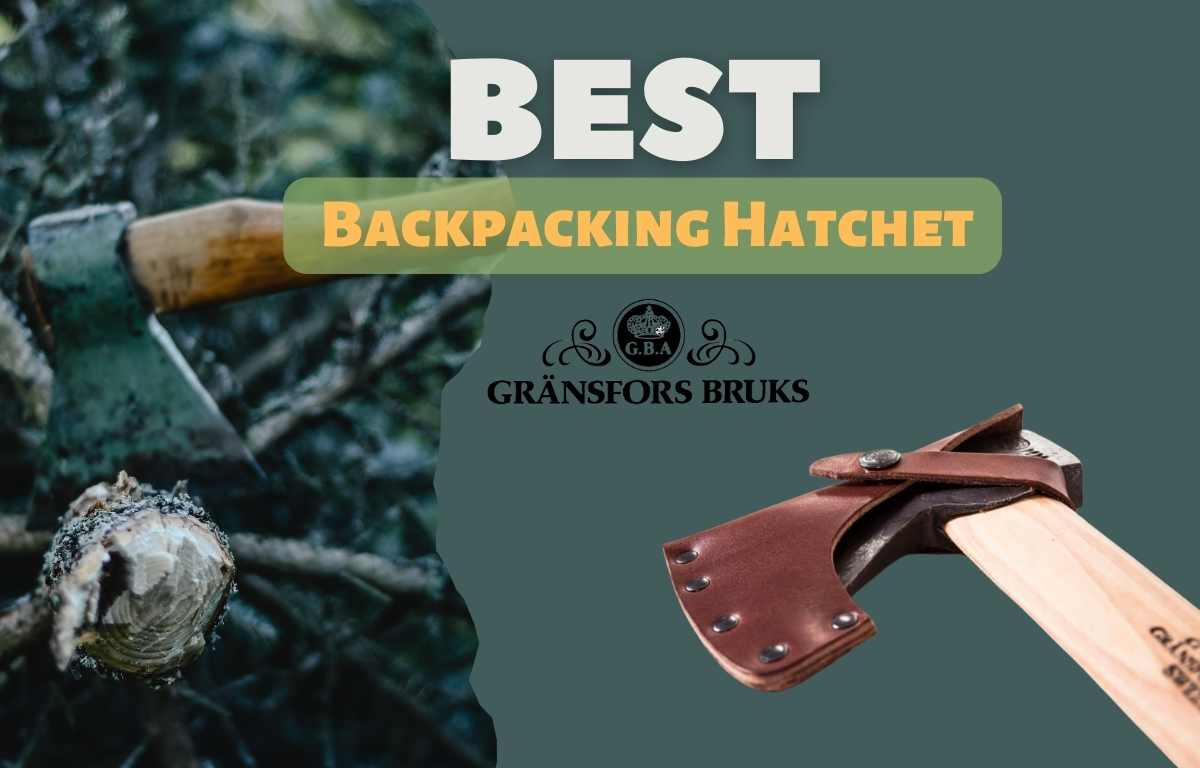
A hatchet is one of the best and most versatile hand tools you can bring with you backpacking. Its compact size and unmatched construction provide a solid piece of kit that will work well for any backpacker.
If you’re looking for the best hatchet for backpacking or camping, I recommend checking out the Gränsfors Bruks Wildlife Hatchet. It is one of the more expensive hatchets on the market, but it’s also the absolute best one available and will last for generations.
Last Tool First Philosophy
Before we get into hatchets, I want to discuss the philosophy of buying your last tool first. If you’re like me, you’ve probably purchased countless tools or gear that lasted a season or two and then just wore out, broke, or wasn’t exactly what you needed. You may have started out looking for the best value, but after some heavy use, you find out that it’s just not up to the job.
The idea of purchasing your last tool first focuses on making a greater investment up front, realizing that the item you purchased will last a lifetime. Too often, we buy inexpensive tools that need to be replaced in a year or two, can’t be repaired, or are just poor quality. Then it becomes unusable. We may then purchase a better quality replacement tool, which may also wear out several years later. By the time we become wiser, we will buy the correct tool that will last a lifetime.
The philosophy follows the idea that if we make that greater investment upfront, the total cost of ownership will be less than what it would be purchasing lower-quality tools first. While this may not apply to everything, especially if a tool or item has a native low life span, legacy tools that can last several lifetimes, like a hatchet, are ripe for this way of thinking.
Hatchets and Axes are tools you own that your grandchildren should use
There is something primal about holding a hatchet or axe. The simplicity of the tool, coupled with its versatility, creates an almost romantic relationship between the tool and the user. Before chainsaws, power saws, and modern technology, the axe and its various iterations were used to cut and shape wood for societal needs. These hand tools were perfected by the hands that used them.

If you research old ax heads, you can see that some of the older hand-forged ones are quite expensive and have a cult following. This reason is because of the tool’s quality, craftsmanship, and longevity. But unfortunately, in today’s mass-produced market, purchasing a hatchet or axe off the shelf of a big box store doesn’t provide the same quality as one did 50 years ago.
Luckily, some companies still practice the traditional manufacturing and forging practices of previous generations and produce equally or better-quality products that will last several lifetimes. Gränsfors Bruks is one of these companies, which is why I recommend them as the best choice for the best tool.
What makes a good Hatchet?
When selecting a hatchet, there are a few things that you want to keep in mind. First, a hatchet is more than just a sharp blade. Any piece of metal can be sharpened to create a sharp edge. Most important is the quality of the metal, the forged steel head, the handle’s ergonomics, and the head’s weight and shape for its intended purposes.
A hatchet is also more than a mini axe. It’s meant for small duty tasks, but you can also use it for precision cutting and carving. Therefore, when searching for the best camping hatchets, you want to think of the uses you have in mind. Most notably, you’ll likely want something to prep firewood, clear small branches from overhanging trees, prep the area for your shelter, and serve more of a be-all, do-all tool.
11 Uses for a Hatchet
A hatchet is more than just a firewood prep tool. There are unlimited uses for it when on a camping trip. Below are some of the more common ones.
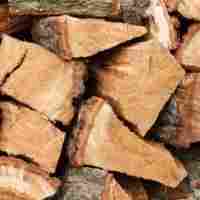
Firewood
When you’re camping, especially if backpacking, you won’t be splitting wood as you would back at home with a splitting axe. Most firewood prep needs will include creating tinder and shortening some wood pieces for the fire. To do this, you want to have a slightly heavier head for the hatchet to reduce fatigue. It’s important to utilize the weight of the hatchet to help cut the wood.
When using my hatchet for creating a fire, If a branch or downed tree is too thick to break by hand or leveraging against a rock, I will usually take some of the wood away at the break-point with a hatchet, allowing me to finish the job by stepping on it while leaning it up against a rock.
I very rarely need to cut larger logs or pieces of firewood in half. My hatchet is more than capable of creating small pieces of tinder to get the fire started and separating larger pieces of wood into the proper size for the fire pit. If you’re looking for a tool to do a lot of heavy splitting, then you may want to upgrade to a larger axe.

Splitting Kindling
A hatchet makes quick work of splitting kindling to start a fire. In fact, if you have ever tried to start a fire without it, you know that it’s nearly impossible. A hatchet can make this chore much faster if you use it correctly. A great technique to use is “contact splitting,” where you swing the hatchet and piece of wood together until contact with a solid surface. The hatchet is then driven into the wood, creating the split.
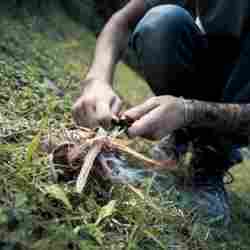
Creating Tinder
In addition to kindling, tinder is another useful tool for fire-making. Essentially, you make even smaller pieces of combustibles than kindling. Tinder is like shaving small pieces of wood that will ignite more easily, and when combined with kindling, it can get a fire started quickly. A hatchet can be easily controlled to accomplish this precision work, especially if the bit is nice and sharp.
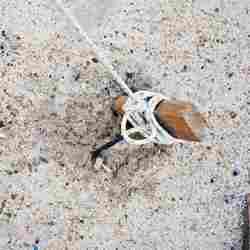
Driving stakes
One of the benefits of a hatchet, with a flat surface on the back of the head, is that you can use this as a hammer. However, in saying that, taking care of your hatches means you shouldn’t abuse them. The backside of the head is more than capable of pounding tent stakes into the ground. I wouldn’t use it to break apart rocks or anything, but when you need a hammer, having a hatchet will fulfill that need, especially when backpacking.
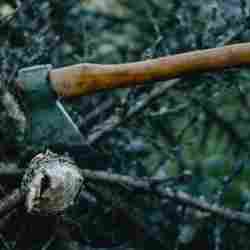
Chopping Down Small Trees
While a hatchet may be small in nature, if you are in a pinch, you can fell a small to medium size tree with one. When doing so, it’s best to start in a comfortable position and aim for a sharp angle to help drop the tree when you’re ready. You can also make a wedge and use the butt of the hatchet to drive it into the tree when ready.
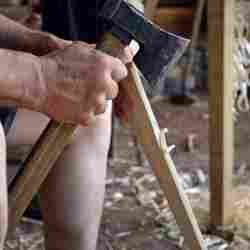
Carving
One of the benefits of a hatchet is to use it as a precision hand tool. In addition, a sharp axe head and the short length of the handle enable you to use it as a carving tool. One of my favorite uses in this capacity is to create small stakes for my tent or shelter, or to secure something that needs to be attached to the ground. While you can sometimes do this with a knife, a hatchet will make quick work of this and allow you to work with thicker material.
Carving is also a fun way to pass the time, especially if you’re sitting by the fire. Once you get experience with your hatchet, this may become one of your favorite activities, and you actually might get good at it, making some bowls, spoons, or other useful camp gear.

Making a Shelter
In an emergency situation, you may need to make a quick shelter out of branches, trees, and other natural materials. A hatchet can help gather all the material you need to make a quick lean-to, teepee, or other structure. This is reason enough to carry a hatchet with you when venturing into the backcountry.
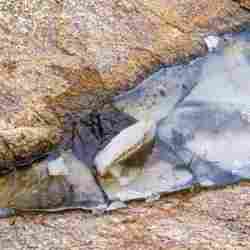
Ice and Snow Tool
While you may envision using a hatchet during warmer months, it can be an invaluable tool in the winter and cold weather. A hatchet can easily break through ice or snow, allowing you access to water. It’s also a tool that you can use as an anchor in hard-packed snow in the event of an emergency.
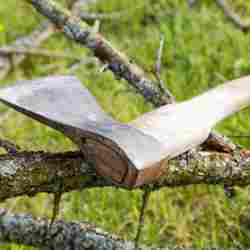
Clearing Branches
The next most useful aspect of a hatchet while camping is to clear away overhanging branches in your campsite area. When I set up camp, I first locate my tent site. Next, I prioritize finding a level and dry location and clearing the branches or small saplings that may be in the way. It’s easy to look for an open area for your tent, but it may not be the best location. A hatchet makes quick work of clearing the area and helps to provide the best possible sleeping location.
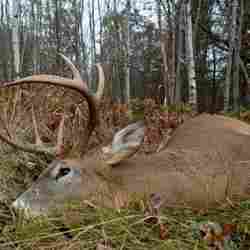
Game Processing
Many Hunters will use a hatchet to help process wild game, like whitetail deer. You can use the hatchet to split the rib cage and quarter a deer in you’re planning to pack it out. Combined with a sharp knife, you can harvest most wild game without any other special tools.

Fire Starter
While not an easy task, or one that’s good for your hatchet, in an emergency situation, you can create a fire with a hatchet. The process involves striking the sharp edge against a rock to create a spark. This will definitely dull your hatchet, but it’s a great resource to have if needed. Just be sure to prep your kindling and tinder with the hatchet before you start.
Parts of a hatchet or axe
You may have thought that there were only two parts of an axe- the head and the handle. However, there are 11 distinct parts of an axe (or hatchet):

Axe Head
- Bit: The bit is the cutting portion of the ax head and is commonly referred to as the blade or the edge. The bit is the most important area of the axe since this is your primary use for it. A bit is only useful if it’s sharp, so maintaining it is crucial to how well your axe performs its job. The bit is comprised of the tow at the top, the heel at the bottom, and the beard, which is located on some axes.
- Toe: The upper corner of the bit is known as the toe, typically where the cutting edge begins. When you use an axe, you try to cut in a toe to heal pattern (just like walking). It’s important to keep the tow sharp to get the cleanest cut/chop.
- Heel: The heel is located at the bottom corner of the bit. If it extends lower than the rest of the head, your axe has a beard. If you want to use your axe for carving and more precise cutting, you’ll use the heel to accomplish this task.
- Beard: As mentioned, when describing the heel, if the bit extends beyond the head, you have a beard on your axe.
- Cheek: The Cheek is the smooth side area of the axe head. While it may not seem like an important part of the axe head, it serves many functions. If it has a sharper wedge, it will be easier to chop but may be less durable. If it has a wider incline (thicker), it will have greater durability but will be more strenuous for chopping. The right multi-purpose axe will have a good balance for multiple uses.
- Butt or Poll: The backside of the axe, opposite the bit, is known as the Butt or Poll. This section isn’t just for hammering, as it helps create the right balance and control when using the axe.
Axe Handle (or Haft)
- Shoulder: The Shoulder of an axe is located where the head mounts onto the handle. This joint is precise to provide the correct strength in attaching the head to the handle.
- Belly: The longest part of the axe handle is known as the belly and often has a slight bow. This area is on the backside of the axe (opposite the bit) and helps identify the best location to hold the axe. A good quality axe will have good straight grain and no knots in the belly of the wooden handle, which provides the best strength. Lower-quality axes will have less-durable handles.
- Throat: The Throat of an axe is where the haft curves and leads to the shorter grip area. A well-designed throat will improve durability and comfort when using it.
- Eye: The Eye of an axe is the hole where the handle is mounted to the head. Since it’s the thinnest part of the wooden handle, it is also an ax’s most common breaking point. However, a well-built axe will be very durable. If it does break, it’s easy to replace.
- Knob: The end of the handle is known as the knob. When selecting an axe, the knob is usually a great place to inspect the quality of the wood in the handle.
Why do you want a wooden handle?
While it may seem like a wooden handle would be less of a positive for an axe, it provides many benefits over composite, fiberglass, or steel handles. Wood is the original axe handle. A good wooden axe handle will use ash or American hickory wood. A wooden handle is much better at absorbing shocks and can be safer. A fiberglass handle, while light, will be less durable.
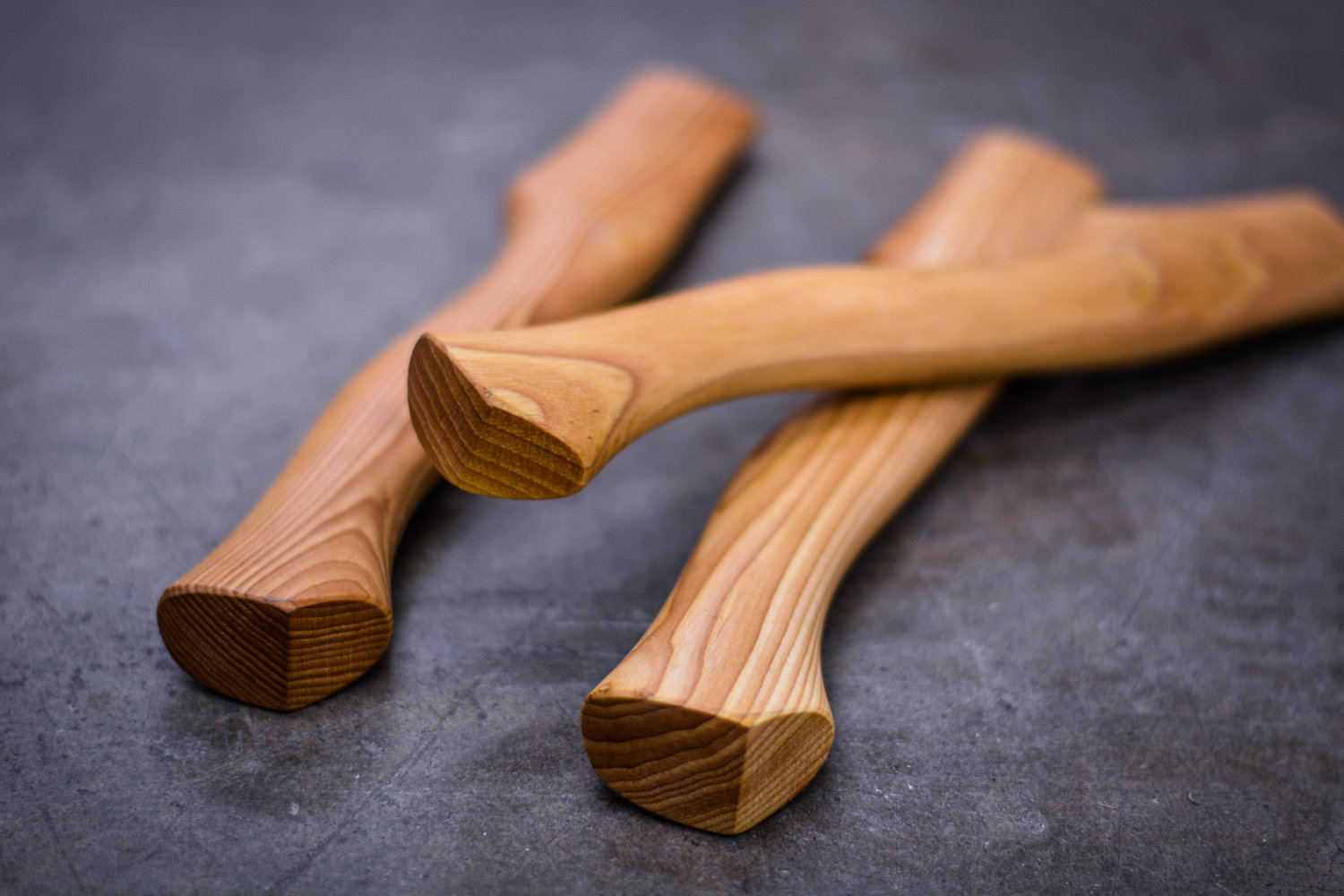
Wood handles are more comfortable and can be crafted to provide the best ergonomics. In my opinion, they also provide a better grip. They’re also easier to replace if needed. All of the best hatchets and axes will use wooden axes. When searching for a hatchet, I recommend staying away from ones with a rubber handle, rubber grip, or ones made of composite material. I also prefer hatches and exes, which are two pieces where the hatchet head is separate from the handle. Unlike a one-piece nylon handle, you can easily replace them if needed. A hatchet or axe with a plastic handle is also prone to causing blisters when used without gloves.
The downside of wooden handles is that they are more susceptible to the elements. They can swell, shrink, and soak up whatever gunk they encounter. However, proper treatment and care of a wooden handle will alleviate most of these concerns.
Weight and Length of Hatchet
When shopping for a hatchet, the first thing you’ll likely notice is the size of the tool. Hatchets and axes come in various sizes and weights. They’re all designed for various applications, and choosing the right one will likely involve focusing on the weight and length.
Hatchets are shorter than other axes and typically have lighter heads, which is great if you plan to use them for backpacking. However, with shorter hatchets, you lose out on leverage, which is important for heavier tasks. Therefore, finding the right balance in size is important when choosing your hatchet.
The Best Camping and Backpacking Hatchet
Now that you’ve learned a little more about hatchets, let’s get to the meat of the article: The best hatchet for backpacking. My top pick is the Gränsfors Bruks Wildlife Hatchet. Purchasing this is a prime example of the “last tool first” philosophy. The company, GränsforsBruks, is the world leader in producing the best axes, hands down.
About Gränsfors Bruks

Gränsfors Bruk has been manufacturing hand-forged axes for over 100 years. Every single axe is designed specifically to fulfill a particular function, with a constant focus on high quality and area of application.
There has also been a strong focus on producing axes with sound green credentials, avoiding any unnecessary consumption of natural resources. A lot of effort has also gone into developing all of their product while caring about the people who created them.
Gränsfors Bruk has defined three criteria that must be met when they manufacture axes.
- We shall manufacture axes with the best possible function for the axe’s area of application.
- We shall manufacture axes that have as little impact as possible on our environment.
- We shall manufacture axes with respect for the people who create them.
Gränsfors Bruks has a long history of forging axes. If you have time, I would recommend you read more about the company’s history and learn about the tool you will invest in.
The Best Choice: The Gränsfors Wildlife Hatchet
The Gränsfors Wildlife Hatchet is a traditional scouting and camping axe with the same head as the hand hatchet but a longer handle. This longer handle lends the axe more power, not least when felling trees.
The Wildlife Hatchet is the perfect size for carrying in your backpack and provides a great weight-to-function ratio. With the Wildlife Hatchet, you can easily lop off large branches, fell small trees, or split small logs for the campfire. The included leather sheath covers the edge and the top part of the poll, making it safe for carrying in a backpack.
All axes from Gränsfors Bruk come with an extended 20-year warranty against manufacturing defects. While some tools may advertise a lifetime warranty, don’t confuse that with quality.
Length:
The overall length of the Wildlife Hatchet is 35 cm (13.77 inches). This is a great all-around length for a hatchet you want to carry into the backcountry. It isn’t too large that it will make it difficult to strap to a pack but is long enough to be versatile and provide enough power when needed. If you’re looking for a larger tool and researching the best camping axes, you may want to consider the Small Forest Axe, which is my favorite tool made by Gränsfors Bruks and a superb lightweight axe. However, the Wildlife Hatched won’t take up as much space in your pack.
Total Weight:
The Wildlife Hatchet weighs just .6 kg (1.3 lbs). It isn’t the lightest on the market but it isn’t the heaviest. It has a great size-to-weight ratio and is well-balanced. It’s also ergonomically designed for precision carving if needed.
Sheath:
The included sheath is made from vegetable-tanned leather and fully covers the bit, making it perfect for stuffing into a backpack.
Head
All the axes produced by Gränsfors Bruk are forged by hand in Sweden. The axe heads need no grinding, honing, or polishing except on the cutting edge. The steel construction of the head does not require painting or varnishing and is built to last generations. The extra head weight over the handle provides good leverage for chopping tasks, providing cleaner cuts.
Gränsfors Bruk uses steel from Ovako that derives entirely from recycled scrap. The scrap is sorted into different grades, and the steelworks uses a mix of these for the steel that it produces. The steel that Gränsfors Bruk uses has been specially created to produce the perfect axe head. The steel must not be too hard or too soft and pliable.
Each Axe head from Gränsfors Bruks is stamped with the initials of the blacksmith, providing a personal touch and allowing you to connect with the person who hand-crafted your tool. You can even look up the individual if you’d like.

Handle:
The handle is made from Hickory and is hand-selected for the most durability. Each hickory handle is impregnated with warm linseed oil and beeswax, which increases the quality of the shafts. In addition to durability, it also aids in allowing you to get a good grip on the hatchet. In addition, the handle will have a hole drilled in the bottom, allowing you to attach a leash if desired.

This Wildlife Hatchet doesn’t have a long handle, but it’s the perfect length for a multi-use tool. If you want a more compact hatchet, you can always check out the Hand Hatchet, which is also a good choice for a small hatchet. Personally, I think you’ll appreciate the extra handle length of the Wildlife Hatchet for added flexibility.
Maintaining and caring for your Hatchet
Your hatchet should be kept in a dry place, but not so dry or warm that the handle risks shrinking in the axe head. Ensure that the bit and the bit sheath are not wet when you put on the sheath. Oil the axe head before the axe is put away for some time. An un-oiled axe may rust.
Axe and hatchet heads are forged for cutting or carving. Do not use other axes as a sledgehammer or wedge. If you hammer too hard on or with an axe, the eye of the axe may deform or break. While hammering a tent stake is not going to hurt the hatchet, do not use it as a sludge hammer or for other heavy tasks. This applies to whatever hatchet you purchase.
Also, inspect the handle regularly. An axe handle, whether fixed with a wedge or glue, may come loose if the axe has been fitted with a handle that has not been dried properly*. Check regularly that the axe handle is secure in the axe head.
Sharpening your Bit
After heavy use, it’s a good idea to professionally sharpen your head with a grinder. However regular maintenance can maintain a sharper edge by using a sharpening stone. Gränsfors Bruks sells a high-quality stone for this task, but you can also use any high-quality sharpening tool.

The Gränsfors Sharpening Stone is comprised of ceramic abrasive with a grain structure developed to best supply the needs of coarse and fine grinding. The coarse, 180-grit side is used for repairing damage from hard wear, whereas the finer, 600-grit side is used for fine grinding. The grain structure of the stone makes it both tough and long-lasting. Compared to a natural stone, a ceramic sharpening stone can be made to have a more precise grain size. The stone has a round, flattened shape with beveled edges to give a round transition. The fine side makes up 2/3 of the thickness, as this is the side that usually wears the most. The stone is normally used with water but can also be used dry.
Conclusion
If you’re considering purchasing a backpacking hatchet that will last your lifetime, you don’t need to look any further than the Gränsfors Bruks Wildlife Hatchet. The unmatched craftsmanship and the thought and dedication that goes into producing the tool can’t be found with any other off-the-shelf brand. It is expensive, but it will be the last hatchet that you need to purchase. It is by far the best backpacking hatchet you can buy. Also, you don’t need to use this solely as a pack axe. It makes an excellent camp hatchet for RV and car camping.
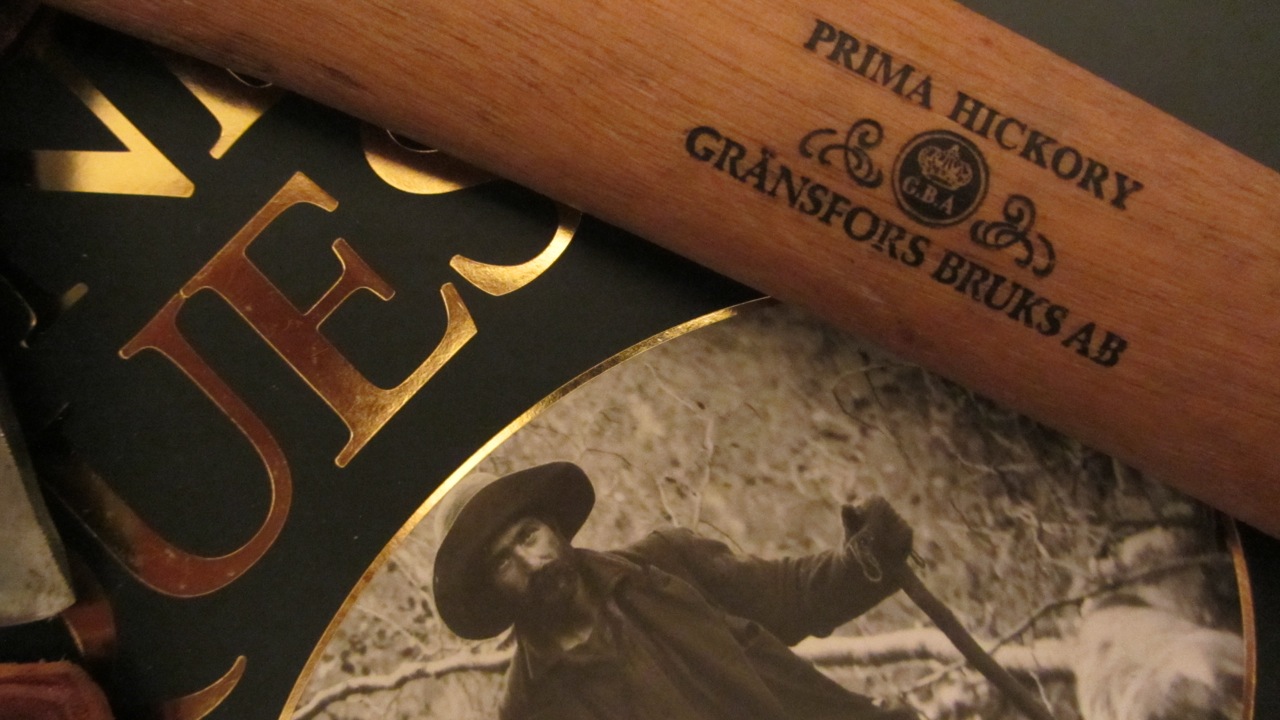
The WIldlife Hatchet has an excellent blade length and is forged from Swedish steel. It’s one of the most useful tools you can carry in your pack. It’s more than just a high-quality hatchet- I think of it as a piece of art. It will last a long time and if cared for, you’ll be able to pass it on to your kid and grandkids when they are ready to head out on their own.
